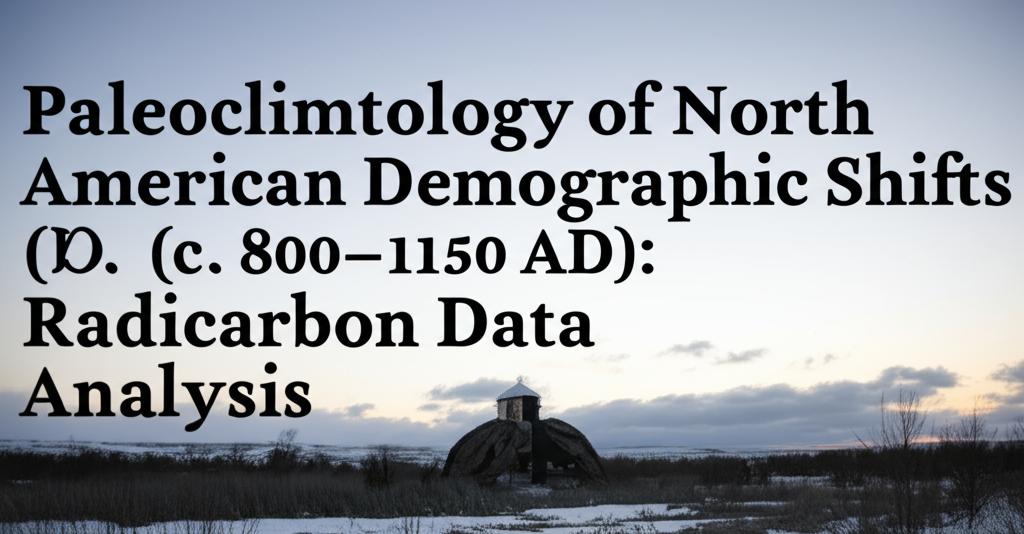Understanding the ebb and flow of ancient populations across North America between roughly 800 and 1150 AD offers a compelling window into human adaptability and the profound influence of environmental change. This period, coinciding with what is often termed the Medieval Climate Anomaly (MCA), witnessed significant climatic variations that reshaped landscapes and, consequently, the human societies inhabiting them. Radiocarbon dating, a cornerstone of archaeological chronology, plays a pivotal role in deciphering these demographic shifts, allowing researchers to build more precise timelines of settlement, abandonment, and population movements.
Paleoclimatological studies, drawing on diverse proxies like tree rings, lake sediments, ice cores, and pollen records, paint a complex picture of the climate during these centuries. In some regions of North America, the MCA brought warmer and drier conditions, while others may have experienced increased moisture or more frequent extreme weather events. These environmental changes directly impacted resource availability, including water sources, arable land for agriculture (where practiced), and the distribution of hunted and gathered species.
By meticulously analyzing large datasets of radiocarbon dates obtained from archaeological sites, researchers can identify patterns in human occupation intensity over time and across different geographical areas. A surge in radiocarbon dates from a particular region and time slice might indicate population growth or increased settlement density. Conversely, a decline or gap in dates can suggest population decrease, abandonment, or a shift to different territories.
For instance, during the 800-1150 AD timeframe, various cultures across North America experienced notable transformations. In the American Southwest, this period saw the rise and reorganization of Ancestral Puebloan societies. Radiocarbon data, when correlated with paleoclimatic reconstructions, illuminates how these communities adapted to fluctuating precipitation patterns, sometimes expanding agricultural systems during favorable periods and contracting or relocating settlements during prolonged droughts.
Similarly, in parts of the Plains and the Eastern Woodlands, shifts in settlement patterns and subsistence strategies are evident. The analysis of summed probability distributions of radiocarbon dates can reveal regional trends in population dynamics, highlighting periods of growth, stability, or decline that often correlate with reconstructed climatic shifts. For example, changes in bison hunting patterns on the Plains or the expansion and intensification of maize agriculture in the East can be tracked and contextualized using these combined datasets.
The integration of paleoclimatological findings with robust radiocarbon chronologies allows for a more nuanced understanding of how past peoples responded to environmental pressures and opportunities. It moves beyond simple deterministic models, recognizing that cultural factors, social networks, and technological innovations also played crucial roles in shaping demographic trajectories. The ongoing refinement of radiocarbon dating techniques and the increasing number of dated contexts continue to provide higher-resolution insights into the complex interplay between climate and human population dynamics in North America between 800 and 1150 AD, revealing a rich tapestry of resilience, adaptation, and change.

